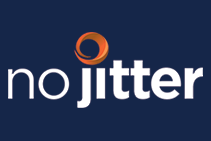Communications platform as a service (CPaaS) is currently one of the most exciting opportunities in the cloud communications space. The CPaaS market is full of fresh headlines around new capabilities and company acquisitions, and it’s forecast the CPaaS revenue will exceed $10 billion globally in 2022 - growing 17% year on year, according to a
study from Juniper Research.
A combination of different factors is propelling this remarkable growth, such as:
- An accelerated shift to digital to improve service and drive operational efficiencies.
- The need to improve digital competitiveness and meet consumer expectations for convenience, excellent customer service, and proactive customer care.
- Flexibility to leverage real-time communication capabilities without investing in new back-end infrastructure.
With an increasing number of enterprise IT leaders, software engineers, and developers turning to CPaaS, it's critical to understand the key differentiators associated with the purchasing process.
Single application vs. a central platform
One of the most important considerations for buyers is how their enterprise, which serves millions of customers, should implement CPaaS.The mindset they must take is to look beyond the immediate uses cases that want to be deployed and implement a CPaaS strategy that will help accelerate IT roadmaps in the future, not lengthen them by creating more complexity.
Traditionally, companies use SDKs and APIs to deploy communications in their messaging-enabled applications on a use-case-by-use-case basis. As businesses expand their messaging efforts, what started as a single application for sending SMS notifications will likely grow into hundreds of disconnected applications that power conversational interactions, video experiences, call deflection, and much more. Each application will have its own code, system integrations, and logic to manage. Ultimately, without a significant developer and IT resources, this approach makes it difficult to scale communications, implement future updates, and leads to broken customer experiences.
To solve this snowballing problem and proliferation of single-use applications, IT leaders should review CPaaS vendors that provide all the capabilities required for automating journeys end-to-end and managing communications-enabled applications on one central platform. The platform acts as the glue between back-end systems and channels, providing a single point of orchestration that lays the foundation for delivering a connected, holistic communications experience.
Evaluating CPaaS platforms
When assessing different CPaaS platforms, these five capabilities should be at the front of an IT leader's mind:
1. APIs and SDKs
APIs and SDKs are the cornerstones of CPaaS. IT leaders should take stock of the APIs and SDKs their company needs and check their availability with a potential vendor. The more a vendor offers, the better - this way, if you want to leverage new channels or other CPaaS capabilities in the future, you won’t have to add stand-alone solutions to support them.
2. End-to-end automation
To make disparate business and partner systems interoperable, enterprises need a vendor to connect them. Inbound system integrations allow events ingested from business systems to trigger communications, while outbound integrations enable records within systems to be looked up and updated. These integration capabilities permit the end-to-end automation of journeys that seamlessly orchestrate interactions between multiple systems and channels.
3. Network connectivity
Reliability, traceability, and scalability are massively important to global enterprises. As a result, the type of connection into carrier networks and digital messaging providers that CPaaS vendors offer becomes another differentiator, impacting everything from latency, options for sender IDs, delivery reports, and message security. Therefore, it’s critical to look for a vendor that offers Tier 1 connectivity.
4. Tools across the application lifecycle
CPaaS vendors are leading the charge in helping enterprises shift to a low-code approach to development. The centerpiece for many vendors is a low-code builder that allows developers to automate and progressively redefine customer journeys quickly. IT leaders must evaluate a vendor’s visual builder but also ensure that there are tools for each stage of the application lifecycle that cater to a broader set of users. Check for in-built tools that simplify debugging, allow for communication templates to be set up, help to ensure compliance, and assist in optimizing journeys through analytics.
5. Support beyond the platform
The communications landscape is complex, and expertise is required to design successful communications solutions, manage the different capabilities of each channel, and know what use cases will have a positive impact. IT leaders need to gauge how much support they will need - not only at the moment of purchase but also in the future - because every CPaaS vendor takes a different approach to how they help their customers.
How to select the right CPaaS provider for the enterprise
For further information on best practices and other qualities to consider when selecting an enterprise CPaaS solution, download our
Enterprise CPaaS Buyer’s Guide.









